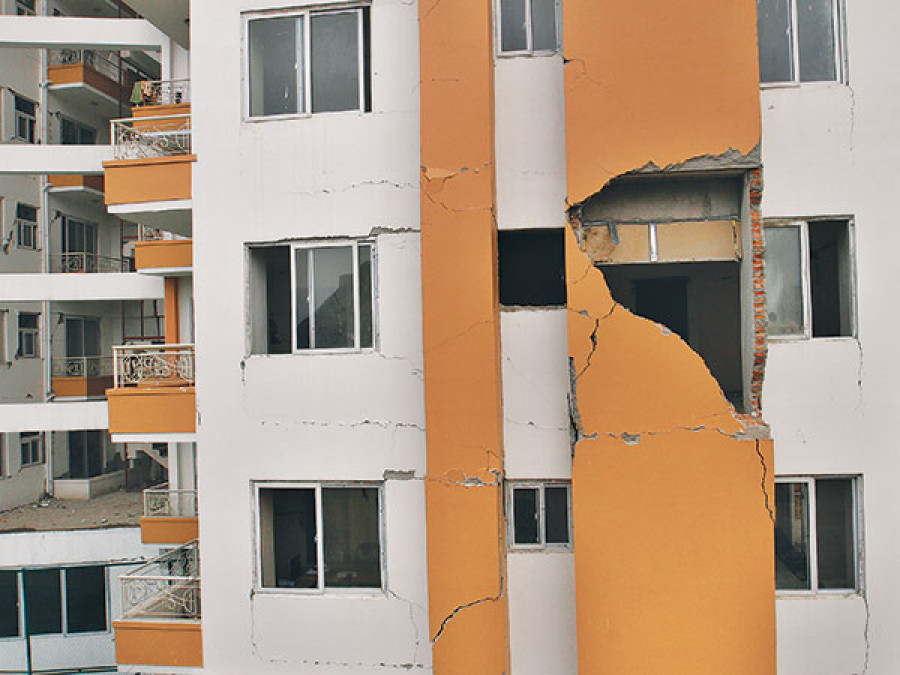Miscellaneous
Bankers, property owners fear collateral damage
With a majority of loans being extended against collaterals of land and houses, the banks and financial institutions (BFIs) have raised concerns about loan recovery
Prithvi Man Shrestha
Nepal Rastra Bank (NRB) data shows 59 percent of total BFI loans are disbursed against collateral of land and buildings as of the first eight months of the current fiscal year. Of the total lending of Rs1.29 trillion, loans of Rs769.62 billion have been extended against the collaterals of land and houses.
Bankers say the devastating earthquake of April 25 has severely handicapped people’s ability to repay loans as it has put strain on incomes from properties they own. “There are many households which have been generating cash flow by giving out flats on rent to payback bank loans,” said Sovan Dev Pant, CEO of Lumbini Bank. “With their source of cash flow taking a hit, the big question now is how they would repay the loans.”
According to the Home Ministry, a total of 191,058 houses were completely destroyed in the earthquake and 175,162 were partially damaged. A total of 10,744 government buildings were flattened, while 14,741 were damaged partially as of Saturday.
According to the bankers, the value of the damaged property put as collateral could diminish considerably and consequentially may not cover the size of the loans, posing risks to the BFIs.
On the other hand, the bankers said it would be difficult to recover loans from the property developers and those who purchased apartments due to the damages caused by the earthquake.
“This will reduce the borrowers’ ability to repay loans,” said Himalayan Bank CEO Ashoke Rana. “People will now have second thoughts on purchasing apartments if not individual houses. The BFIs have a loan exposure of around Rs 56 billion in the real estate sector which includes high-rise housing and land development projects.
Considering the bigger impact on loan recovery, the Nepal Rastra Bank (NRB) has asked the BFIs to submit details about the loans that could be affected and status of the collaterals after the quake.
NRB spokesperson Min Bahadur Shrestha said that they have sought details about the damages to the collaterals and BFIs’s own properties to take measures to ease loan recovery.
The BFIs have also started seeking details from the borrowers about the damages to the collaterals. “We have asked the borrowers about the damages caused by the earthquake,” said Rana. Given the extent of damage to the assets along with loss of lives, the bankers are also planning to extend relief to the borrowers. “We can reschedule the loans provided against the damaged collaterals,” he said.
The impact of damages would be evident in the last quarter of the current fiscal, according to the bankers.
Lumbini Bank CEO Pant said that as cash flow of many enterprises, including hotels, have been affected due to sudden cancellations following the quake, loan recovery is likely to remain poor in the last quarter.
The banks should adopt a policy of maintaining a higher reserve instead of distributing dividends for their long-term health, the bankers suggest. “The impact of damages to the collaterals may be too high which may hit loan recovery and profitability. It is therefore necessary that the banks maintain a higher reserve to mitigate the impact on the banks,” Pant said.




 10.12°C Kathmandu
10.12°C Kathmandu










